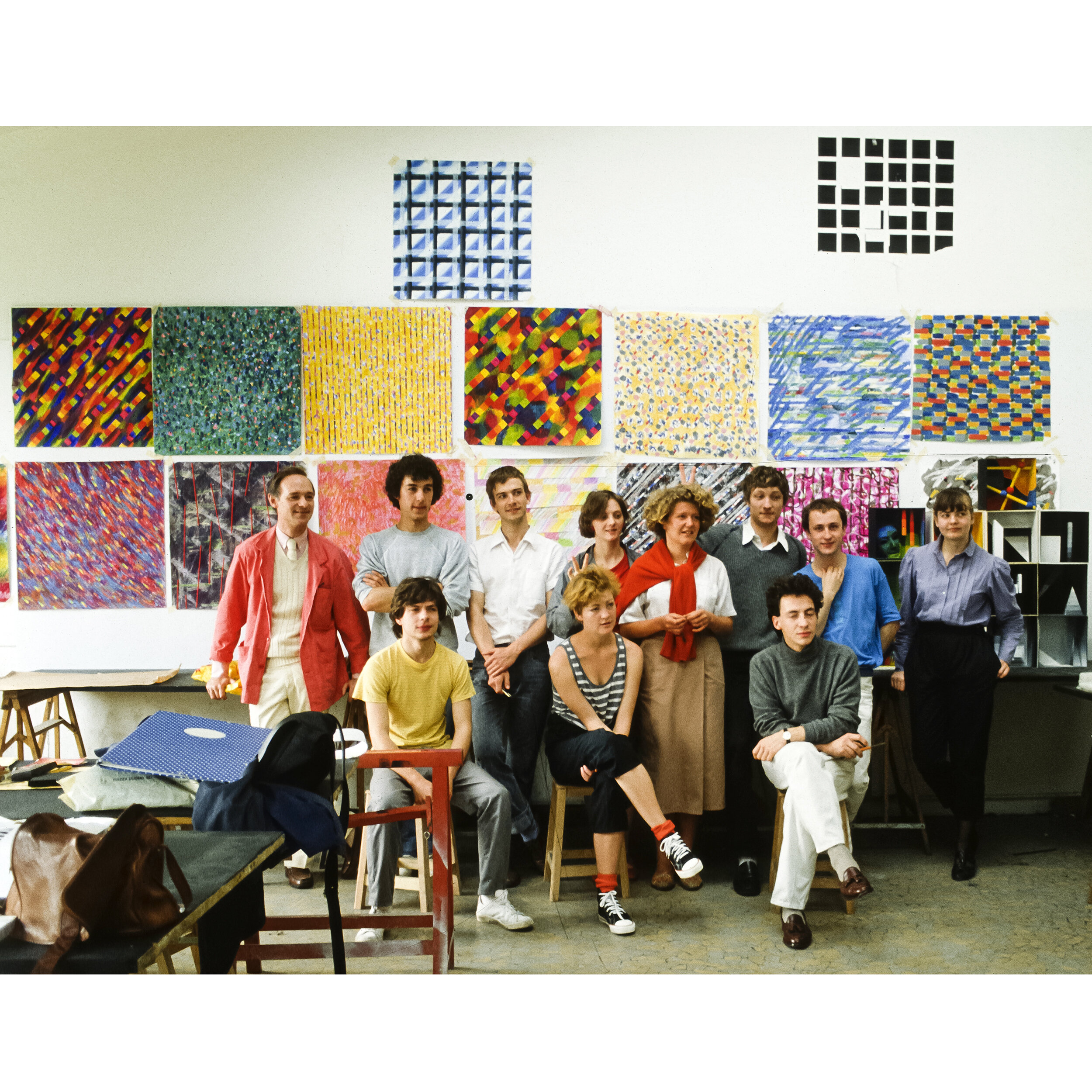Biography
Jean-Philippe Lenclos began his studies in cabinet making at École Boulle in Paris in 1953, and went on to study art and design at the École Nationale Supérieure des Arts Décoratifs (ENSAD), also in Paris, until 1962. It was here that Lenclos undertook a two year scholarship at the School of Fine Arts in Kyoto, Japan which stimulated his interest in the role of colour in design. In particular, Lenclos’s imagination was captured by the subtle, earthy tones of housing in Japan and their contrast with the vibrant oranges of the buildings in his home town in northern France.
On his return to Paris, Lenclos took a job as Artistic Director at the company Peintures Gauthier, which connected his studies of regional colour with the production of paints for architecture. His study of the local colour variations across the regions of France for a range of paints guided his future research into indigenous colours of the world.
Photo: Lenclos in Egypt, 1962
In 1978 Lenclos set up his studio Atelier 3D Couleur, designing for international clients across architecture, town planning, industrial products and consumer products. The studio’s work covered a remarkable variety of applications including; cars, motorcycles, bicycles, trains, metro stations, buses, aircraft, boat yards, blast furnaces, cranes, shopping centres, housing estates, town planning, schools, interiors, sanitary ware, parquets, upholstery, textiles, sewing threads, clothing, shoes, cosmetics, shavers, kettles, mixers, toasters, saucepans, pens and paints. They worked with the many multinational companies, including Renault, Yamaha, Disney, Gitane, Parker, Moulinex, Philips, Rowenta, Tefal and Salomon.
Photo: Lenclos, standing right, with the designers at Atelier 3D Couleur, 1978
In 1969 Lenclos began teaching colour on the first year of the design course at ENSAD, continuing until 2004. His aim was to introduce students to the three key pillars of understanding of colour: the colour wheel, contrast and colour families. Many of his students went on to become successful designers and to work with him in his studio.
Photo: Lenclos with his students at ENSAD.
In 1990, working with his wife Dominique who wrote and edited, Lenclos published the first of his books on his theory the geography of colour, The Colours of France. It was awarded several international prizes, including the Prix Georges-Pompidou from the Haut-Comité de la Langue Française, the Prix Charles-Maunoir from the Société de Géographie, the 1983-4 Prize for International Colour Design from the Design Centre of Stuttgart, and the bronze medal for the modestly titled Most Beautiful Books in the Whole World at the Leipzig Book Fair of 1984.
Over the following 20 years they produced seven books studying regional variations of colour use in housing across the world, which have been published variously in French, English, Japanese and Chinese.
Lenclos’s work on the Geography of Colour has also been exhibited internationally, including in Tokyo (1972), London (1974), Paris (1977) and Lisbon (1978). Many of his works are held permanently in the collection of the Musée National d'Art Moderne at the Pompidou Centre in Paris. The methodology of analysis created by Lenclos is known and applied worldwide today.
Photo: Lenclos with his wife Dominique.
Throughout his career Lenclos has maintained a daily routine of painting and drawing, in particular watercolour and oil paints, still life and abstract. His constant development of this skill creates space for limitless experimentation and feeds his professional work. These works are a private passion and outside of this site have not been exhibited.
Photo: Lenclos at his home in 2018




